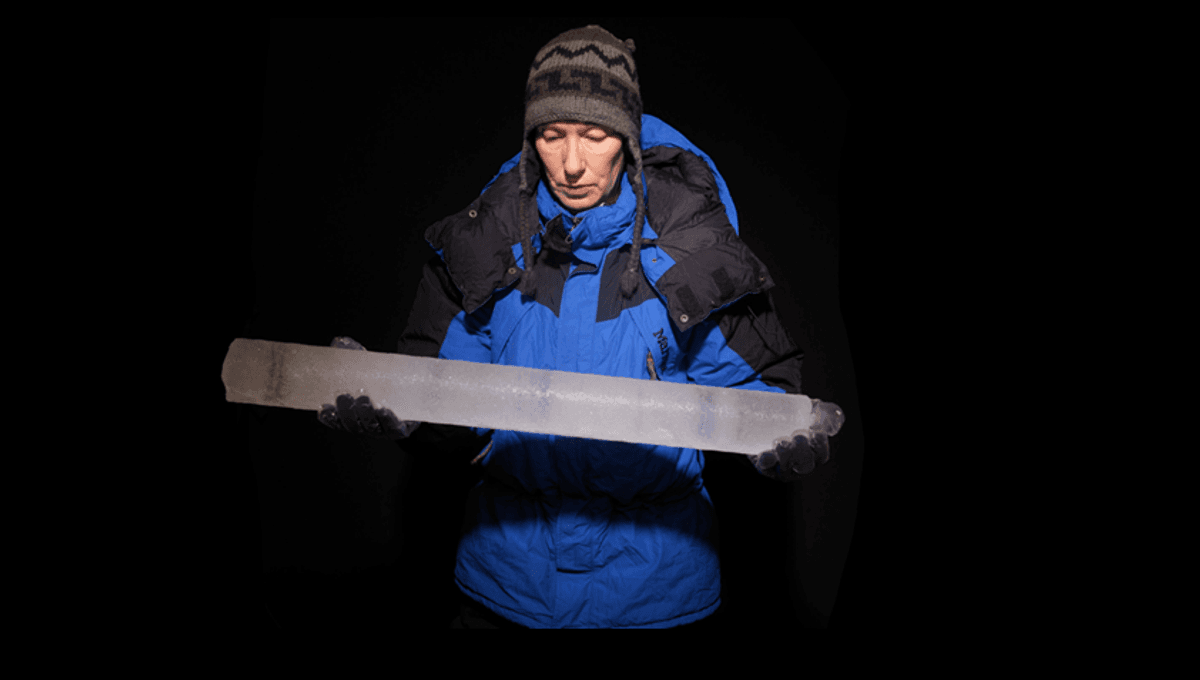
Scientists have had to stop using the Corbassière glacier in Valais, Switzerland, as a record of the changing climate, because the climate has changed too much.
Much of what we know about the Earth’s climate, we have learned from ice. Glaciers capture bubbles of air that reveal atmospheric concentrations of gasses when the ice formed. Isotopes of oxygen in the water molecules provide clues to temperatures at the time. Pollutants trapped in the ice contain their own information.
Together, these inspire climatologists to travel to Greenland, Antarctica, and the tops of mountains to obtain ice cores. However, they only work because ice is laid down in layers each winter. These, like the rings of trees, provide information on the events of that particular year – if the layers cannot be distinguished, the ice ceases to serve its purpose.
Some ice sheets record the climate over hundreds of thousands of years, but the ice in the Corbassière is of much more recent ilk. Near its top, it consists of firn: a stage in the process of snow becoming ice. An average of 2 meters (7 feet) of firn from each year between 2011 and 2018 is found at Corbassière, allowing for much greater resolution than most locations.
Summer winds bring pollution in the form of ammonium, nitrate, and sulfate to the Alps, where they are deposited on glaciers like Corbassière. Colder winter air rises less, and concentrations of these particulates fall.
When Paul Scherrer Institute PhD student Carla Huber and Professor Margit Schwikowski studied a 14-meter (49-foot) core collected in 2018, they could see the previous seven years in outstanding detail. Yet an 18-meter (59-foot) 2020 core produced very different results, with lower trace concentrations, and far less seasonal variation.
Huber, Schwikowski, and colleagues conclude recent summers have gotten so hot that the glacier melted so deeply that even layers buried beneath meters of firn were affected. Deposits from different seasons mixed, leading to smoothing out, Moreover, some of the meltwater drained away, causing gaps in the glacier to sink to the bottom. “Apparently the water there did not freeze again, concentrating the trace substances,” said Schwikowski in a statement. “But instead it drained off and literally washed them away.”
The team compared the process to a library break-in where pieces of different books get mixed up, and some are stolen altogether.
This would be worrying enough for the future if Grand Combin, from which the glacier flows, had experienced some freak event. However, the nearest weather stations indicate it did not. Instead, it has simply warmed in line with the global average.
“From this we conclude that there was no singular trigger for this strong melting, but that it resulted from many warm years in the recent past,” Schwikowski said. “It seems a threshold has been crossed, which now has led to a comparatively strong effect.”
It’s yet another example of how the effects of climate change are surprising even those who have been studying it for decades, and seldom in a good way. “For a long time it has been clear that the glacier tongues are retreating. But we would not have thought that the areas feeding high alpine glaciers would also be so severely affected – that is, their highest part, where the ice replenishment is formed,” Schwikowski said.
Schwikowski is part of a project by the Ice Memory Foundation seeking to collect cores from 20 endangered glaciers before they melt, and store them in a global climate archive. Corbassière was to be one of these. The 2018 core may still be included, but Schwikowski says much of the 2020 core is now useless. The transition between hard and soft layers as a result of melting and refreezing almost destroyed a very expensive drill bit. Plans to drill much deeper to collect thousands of years’ worth of data were abandoned.
“At the Grand Combin, we’re already too late.” Schwikowski said.
It’s possible that nearby glaciers could take Corbassière’s place in the archive, but with all but two of the Alps’ glaciers starting at lower altitudes, the rest may be similarly affected.
Footage of the spectacular retreat of many glaciers has become a symbol and warning of global heating – but even where the effects are not visible to the naked eye, the consequences may still be serious.
“The threat of glacial-archived information being lost forever is a major challenge faced by the scientific community, as it forms one of the best records of past climatic and environmental changes,” the paper on the situation notes.
The study is published open access in the journal Nature Geoscience.
Source Link: Glacier Melting Destroys Climate Data, Disrupting Ice Archive Plans